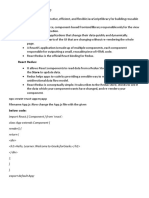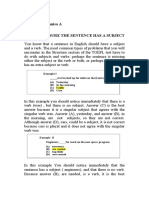0% found this document useful (0 votes)
23 views8 pagesWebii React Basics (Components, Props) Lesson005
This document provides an overview of React components, detailing their structure, types (functional and class components), and how to create and use them within a React application. It emphasizes the importance of props for passing data between components and best practices for component design. Additionally, it includes examples of component creation and usage, along with key concepts related to props.
Uploaded by
BRIAN MUTURICopyright
© © All Rights Reserved
We take content rights seriously. If you suspect this is your content, claim it here.
Available Formats
Download as DOCX, PDF, TXT or read online on Scribd
0% found this document useful (0 votes)
23 views8 pagesWebii React Basics (Components, Props) Lesson005
This document provides an overview of React components, detailing their structure, types (functional and class components), and how to create and use them within a React application. It emphasizes the importance of props for passing data between components and best practices for component design. Additionally, it includes examples of component creation and usage, along with key concepts related to props.
Uploaded by
BRIAN MUTURICopyright
© © All Rights Reserved
We take content rights seriously. If you suspect this is your content, claim it here.
Available Formats
Download as DOCX, PDF, TXT or read online on Scribd
/ 8




































































































